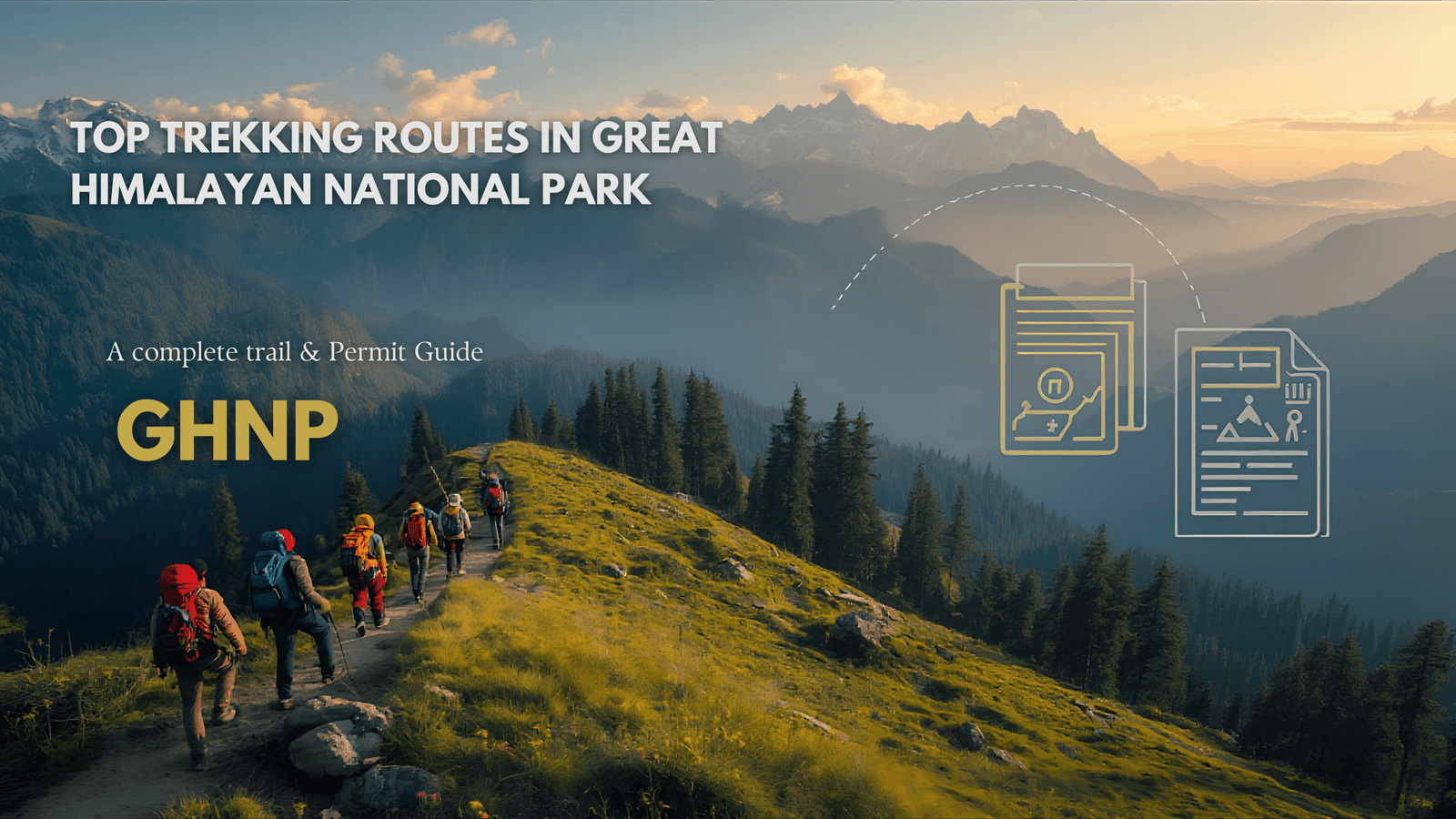The majestic mountains of Kashmir beckon those with a thirst for adventure and a love for the great outdoors. Trekking in this pristine region offers breathtaking vistas, thrilling trails, and an array of cultural experiences. But before you lace up your boots, it’s crucial to prepare adequately for your Kashmir trekking expedition. This guide provides you with essential insights on fitness, gear, and permits to ensure a safe and unforgettable trek.
The Beauty and Challenge of Kashmir Trekking
Kashmir, often referred to as “Paradise on Earth,” boasts some of the most stunning landscapes in the world. Its verdant valleys, crystal-clear lakes, and snow-capped peaks are a trekker’s dream. However, this beauty comes with its set of challenges. The rugged terrain and variable weather conditions demand a high level of preparation, both physically and mentally.
Preparing for a trek in this region involves more than just physical fitness. You’ll need to be well-equipped with the right gear, and understanding the permit process is vital to avoid any last-minute hiccups. By the end of this post, you’ll be well-equipped with the knowledge to tackle these challenges head-on.
Building Your Fitness Foundation
Before you set foot on the trails of Kashmir, building a solid fitness foundation is paramount. Trekking requires endurance, strength, and flexibility. Start your fitness regime at least two months before your planned trek, incorporating cardio, strength training, and flexibility exercises.
Cardio workouts like running, cycling, or swimming are excellent for building endurance. Aim for at least three cardio sessions per week, gradually increasing intensity and duration. Strength training helps you carry your backpack more comfortably, focusing on your core, legs, and back. Add flexibility exercises such as yoga or stretching to prevent injuries and improve your range of motion.
It’s important to simulate trekking conditions during your training. Incorporate hikes with a loaded backpack to get accustomed to the weight you’ll carry. This not only prepares your body but also helps identify any gear-related discomforts early on.
Essential Trekking Gear for Kashmir
Having the right gear can make or break your trekking experience. The weather in Kashmir can be unpredictable, so it’s crucial to pack appropriately. Begin with a sturdy pair of hiking boots that are well broken-in to prevent blisters and ensure comfort on uneven terrain.
Layering is key to staying comfortable in varying conditions. Pack moisture-wicking base layers, insulating mid-layers, and waterproof outer layers. A good-quality backpack with adequate support and compartments is necessary to carry essentials like water, snacks, and extra clothing.
Don’t forget trekking poles for stability, especially on steep inclines and descents. Also, pack a hat, sunglasses, and sunscreen to protect against UV rays, even on cloudy days. Consider investing in a reliable sleeping bag and tent if your trek involves overnight camping.
Navigating the Permit Process
Permits are a crucial aspect of trekking in Kashmir, ensuring safety and environmental preservation. Different treks may require different permits, often obtained from local authorities. It’s essential to research the specific requirements for your chosen route well in advance.
Typically, permits can be acquired through government agencies or authorized tour operators. Be prepared to provide identification, itinerary details, and sometimes even a medical certificate. Allow sufficient time for processing to avoid delays.
Understanding the local regulations and restrictions is also important. Some areas may have limited access due to environmental conservation efforts or security concerns. Staying informed about these factors will help you plan a smooth trek.
Planning Your Itinerary
Creating a detailed itinerary is essential for a successful trekking expedition. Start by selecting a trek that matches your fitness level and interests. Kashmir offers a range of treks, from beginner-friendly trails to challenging high-altitude routes.
Once you’ve chosen a trek, research the trail’s difficulty, estimated duration, and highlights. Plan your daily distances and rest stops, allowing time for acclimatization if needed. Consider consulting experienced trekkers or local guides for insights and recommendations.
While planning, remain flexible. Weather conditions and unforeseen circumstances can alter your itinerary. Having contingency plans ensures you’re prepared for any changes and can make the most of your adventure.
Acclimatization for High Altitudes
When trekking in Kashmir, altitude is a significant consideration. Many treks involve high-altitude passes and campsites, where acclimatization becomes crucial to avoid altitude sickness. Ascend gradually, allowing your body time to adjust to the reduced oxygen levels.
Plan rest days during your trek to help with acclimatization. Listen to your body and recognize symptoms of altitude sickness, such as headaches, nausea, or dizziness. Hydration is key, so drink plenty of water and avoid alcohol.
In severe cases, descend immediately and seek medical assistance. Being prepared and informed about altitude-related challenges ensures a safer and more enjoyable trekking experience.
Choosing the Right Trekking Season
Kashmir’s climate varies significantly with the seasons, making it important to choose the right time for your trek. The best trekking months are generally from June to September when the weather is mild and the trails are accessible.
During this period, the snow has melted, revealing lush greenery and blooming flowers. However, be prepared for occasional rain showers, particularly in July and August. In contrast, winter treks are possible but require more advanced skills and gear.
Research the specific conditions of your chosen trek during different seasons. Consulting local guides or experienced trekkers can provide valuable insights into the best time to visit.
Regards
Understanding Local Customs and Culture
Trekking in Kashmir offers a unique opportunity to immerse yourself in the local culture. The region is home to diverse communities, each with its own traditions and customs. Respect for local culture and people is essential for a positive trekking experience.
Take the time to learn about the customs of the areas you’ll visit. Greeting locals with a friendly “Namaste” or “Salam” goes a long way in building rapport. Be mindful of cultural norms, such as dress codes and religious practices, and always seek permission before photographing people or their property.
Engaging with local communities can enrich your trek and provide a deeper understanding of the region’s heritage. Consider staying in homestays or guesthouses run by locals to experience authentic Kashmiri hospitality.
Safety Tips for an Unforgettable Trek
Safety should be a top priority on any trekking expedition. Before setting out, inform someone about your itinerary and expected return date. Carry a fully charged phone with emergency contacts saved, and a power bank for recharging.
Be aware of your surroundings and follow marked trails to avoid getting lost. In case of injury or emergency, remain calm and use your phone to call for help if possible. Carry a basic first aid kit with essentials like bandages, antiseptic, and pain relievers.
Traveling with a group or hiring a local guide can enhance safety, especially in remote areas. Guides are familiar with the terrain and local conditions, providing invaluable support during your trek.
Connecting with Fellow Trekkers
Trekking in Kashmir is not just about exploring the landscapes; it’s also an opportunity to connect with fellow adventurers. Whether you’re traveling solo or with friends, the camaraderie among trekkers can create lasting memories.
Engage with other trekkers along the trail, sharing experiences and tips. Campfire conversations and shared meals foster friendships that extend beyond the trek. Social media groups and forums are also great resources for connecting with like-minded individuals.
Consider participating in group treks organized by reputed trekking companies. These trips offer the chance to meet new people, and the collective spirit often enhances the trekking experience.
Capturing the Moments
Your Kashmir trekking expedition will be filled with awe-inspiring moments and breathtaking vistas. Capture these memories with a camera or smartphone to relive the experience long after the trek is over.
Focus on capturing the essence of the landscape, from sweeping panoramas to close-ups of unique flora. Don’t forget to photograph the people you meet, as they add depth and context to your story.
While photography is a great way to document your trek, remember to live in the moment. Sometimes, the most cherished memories are those you keep in your heart rather than on film.





